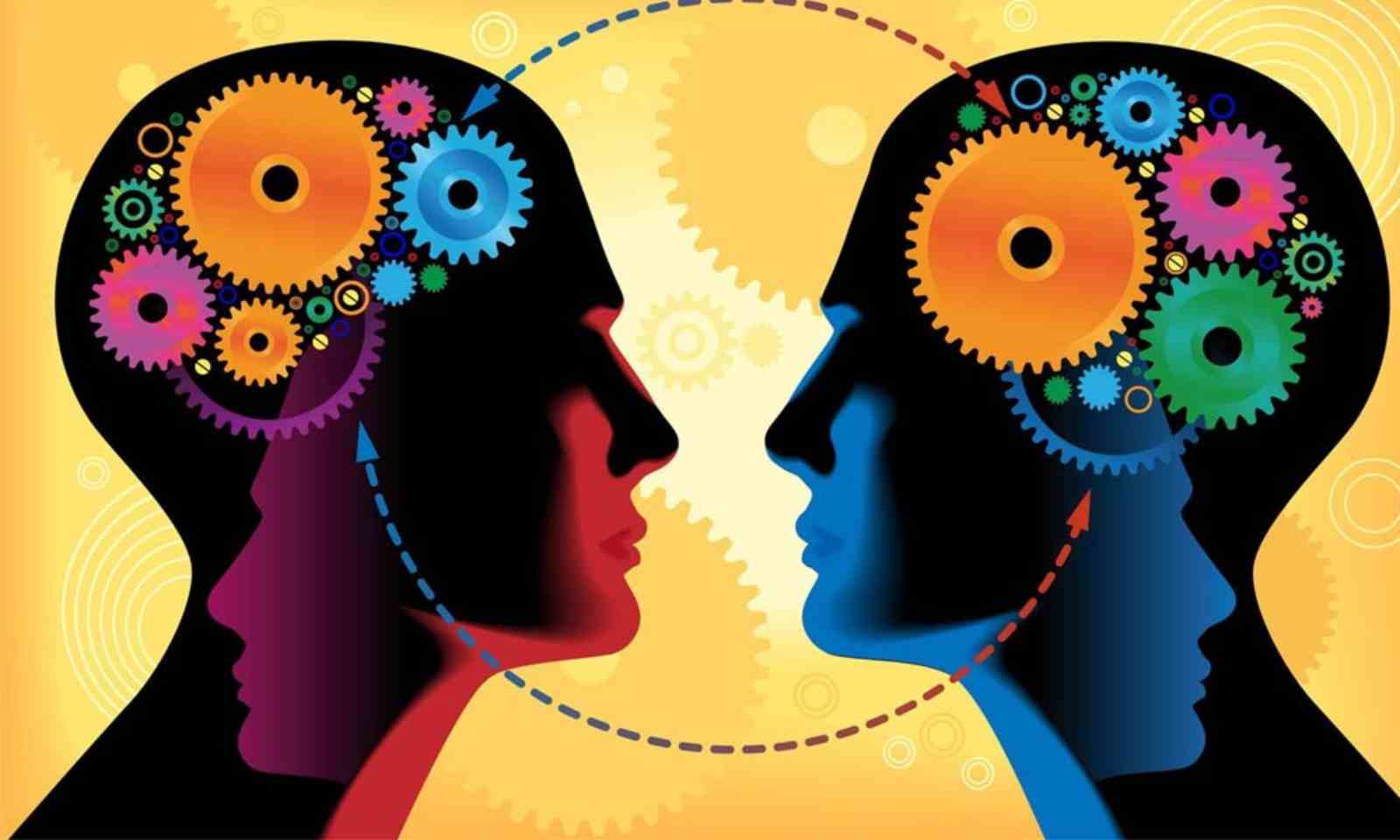Introduction
In today’s information age, where we are bombarded with an overwhelming amount of data, distinguishing truth from falsehood has become increasingly challenging. Critical thinking plays a vital role in analyzing and evaluating statements to determine their accuracy and validity. In this article, which of the following statements is true we will delve into the importance of critical thinking and explore various strategies to identify true statements amidst a sea of misinformation.
The Power of Critical Thinking
Critical thinking is the ability to objectively analyze information, evaluate its credibility, and arrive at well-reasoned conclusions. It enables us to separate facts from opinions, detect logical fallacies, and make informed decisions based on evidence. Engaging in critical thinking equips individuals with a toolkit to navigate the complexities of the modern world. By questioning assumptions, examining biases, and seeking reliable sources, we can uncover the truth hidden behind misleading statements.
What Defines a True Statement?
Before we embark on our journey to distinguish truth from falsehood, let us first understand what constitutes a true statement. A true statement reflects an accurate representation of reality and aligns with verified facts or logical reasoning. However, in an era of misinformation and subjectivity, identifying true statements can be akin to finding a needle in a haystack. Let’s explore several approaches to tackle this challenge.
Fact-Checking Websites: Unveiling Deceptive Claims
Fact-checking websites have emerged as powerful tools to combat the proliferation of false information. These platforms employ teams of researchers who meticulously verify claims made by individuals, organizations, and media outlets. Websites such as Snopes, PolitiFact, and FactCheck.org provide a comprehensive examination of statements, scrutinizing their accuracy and context. By referring to reputable fact-checking sources, one can ascertain the truthfulness of a statement.
Example:
Suppose you come across a statement claiming that “Eating carrots can improve night vision.” By consulting fact-checking websites, you discover that this popular belief is partially true. While carrots contain Vitamin A, which is essential for eye health, they do not directly enhance night vision. The statement, in this case, is partly true but requires additional context.
Analyzing Credible Sources: Seeking Authority and Expertise
Another effective way to determine the truthfulness of a statement is by evaluating the credibility of its source. Gathering information from reliable and authoritative sources significantly increases the likelihood of encountering accurate statements. Peer-reviewed scientific journals, renowned news outlets, and academic institutions are examples of trustworthy sources where rigorous research and fact-checking processes are in place.
Example:
Let’s say you encounter a claim that “Climate change is a hoax.” To assess the statement’s veracity, you turn to scientific studies published by reputable organizations such as NASA or the Intergovernmental Panel on Climate Change (IPCC). These sources present overwhelming evidence confirming the reality of climate change, debunking the baseless claim.
Applying Logical Reasoning: Unraveling Fallacies
Logical fallacies are deceptive techniques utilized to persuade individuals without relying on sound reasoning. By understanding common fallacies, one can recognize flawed arguments and identify statements that lack validity. Engaging in critical thinking allows us to dissect faulty reasoning and expose the falsehoods hidden behind fallacious claims.
Example:
Suppose you come across the statement, “All politicians are corrupt; therefore, we should never trust them.” This argument employs a fallacy known as “hasty generalization” by making an unwarranted generalization based on a few instances. By recognizing this fallacy, you can question the validity of the statement and seek a more nuanced perspective.
Pros and Cons of Critical Thinking
While critical thinking equips us with valuable tools to navigate complex information landscapes, it is important to consider both the pros and cons of employing this approach.
Pros
- Enhanced Decision-Making: Critical thinking enables individuals to make well-informed decisions based on evidence and logical reasoning.
- Reduced Vulnerability to Misinformation: By developing critical thinking skills, individuals become less susceptible to the influence of false information and propaganda.
- Improved Problem-Solving: Engaging in critical thinking fosters innovative problem-solving skills by encouraging individuals to think outside the box and consider multiple perspectives.
Cons
- Time-Consuming Process: Employing critical thinking can be time-consuming, requiring thorough research and analysis to arrive at valid conclusions.
- Cognitive Effort: Critical thinking demands mental effort and can be mentally exhausting for individuals not accustomed to engaging in such activities.
- Potential for Disagreement: Critical thinking often involves questioning commonly held beliefs, which can lead to disagreements with those who hold opposing views.
Alternatives to Critical Thinking
While critical thinking is a fundamental skill for navigating the complexities of today’s world, there are alternative approaches that individuals may employ in decision-making processes.
Intuitive Decision-Making: Trusting Your Gut
Intuitive decision-making relieson instinct, gut feelings, and past experiences to make decisions. This approach emphasizes quick, intuitive judgments rather than extensive analysis or critical thinking. While intuitive decision-making can be beneficial in certain situations where time is limited or the stakes are low, it also carries a higher risk of biases and errors due to its reliance on personal biases and limited information.
Emotional Decision-Making: Letting Feelings Guide Choices
Emotional decision-making occurs when individuals prioritize their emotions and subjective feelings when making choices. This approach can lead to decisions that are driven by personal preferences, desires, or momentary impulses. While emotions play an important role in decision-making and can provide valuable insights, relying solely on emotions without critical evaluation may result in irrational choices or overlooking crucial information.
Consensus Decision-Making: Seeking Agreement among Stakeholders
Consensus decision-making involves gathering input and perspectives from various stakeholders and reaching a collective agreement. This approach values collaboration, inclusivity, and shared decision-making processes. While consensus decision-making promotes teamwork and ensures multiple perspectives are considered, it can be time-consuming and challenging to achieve, particularly in situations where opinions diverge significantly.
Step-by-Step Guide to Applying Critical Thinking
Now that we understand the importance of critical thinking, let’s explore a step-by-step guide to applying this approach effectively:
- Identify the Statement: Begin by clearly identifying the statement or claim that you wish to evaluate for its truthfulness.
- Gather Information: Collect relevant information from credible sources, such as scientific studies, expert opinions, or verified data, to gain a comprehensive understanding of the subject matter.
- Analyze the Source: Evaluate the credibility and expertise of the source providing the statement. Consider factors such as reputation, qualifications, and potential biases that may influence the reliability of the information.
- Assess Supporting Evidence: Examine the evidence supporting the statement. Look for empirical data, logical reasoning, and consistency with established facts.
- Identify Logical Fallacies: Scrutinize the statement for any logical fallacies or flawed arguments that may undermine its validity. Common fallacies include hasty generalizations, false dichotomies, or appeals to emotions.
- Consider Counterarguments: Engage in critical thinking by considering alternative viewpoints and counterarguments. This helps to develop a more nuanced understanding of the topic and evaluate the strength of the original statement.
- Draw Conclusions: Based on the gathered information, analysis of sources, and evaluation of supporting evidence, draw a well-reasoned conclusion regarding the truthfulness of the statement.
- Communicate Findings: If appropriate, share your findings with others to promote informed discussions and contribute to a more accurate understanding of the subject matter.
Comparison: Critical Thinking vs. Blind Acceptance
To further emphasize the importance of critical thinking, let’s compare it to blind acceptance, which is the unquestioning belief in statements without engaging in thoughtful analysis or evaluation.
Critical Thinking:
- Involves questioning assumptions, examining biases, and seeking reliable sources.
- Considers multiple perspectives and evaluates evidence before drawing conclusions.
- Promotes informed decision-making based on logical reasoning and evidence.
Blind Acceptance:
- Accepts statements without questioning their validity or credibility.
- Relies on personal biases and subjective beliefs rather than objective evaluation.
- Increases vulnerability to misinformation and decreases the likelihood of making well-informed decisions.
By comparing critical thinking to blind acceptance, we can clearly see the inherent value of engaging in critical thinking when confronted with statements or claims.
Tips for Enhancing Critical Thinking Skills
To further refine your critical thinking abilities, consider the following tips:
- Practice Active Listening: Actively listen to different viewpoints and perspectives, allowing yourself to empathize with other opinions and challenge your own biases.
- Seek Diverse Sources: Expose yourself to a wide range of information sources, including those with differing perspectives and ideologies. This broadens your understanding and helps you evaluate statements from multiple angles.
- Question Assumptions: Challenge assumptions underlying statements by asking probing questions. This allows you to uncover hidden biases or unsupported claims.
- Develop Skepticism: Adopt a healthy dose of skepticism when encountering new information. Avoid accepting claims at face value without verifying their accuracy.
- Reflect on Your Own Biases: Recognize your own biases and strive to minimize their influence on your thinking and decision-making processes.
By incorporating these tips into your daily life, you can cultivate and enhance your critical thinking abilities.
The Best Approach: Incorporating Critical Thinking into Decision-Making
When it comes to making well-informed decisions, incorporating critical thinking is undoubtedly the best approach. By utilizing critical thinking skills, individuals can navigate the complexities of the modern world, distinguish truth from falsehood, and make informed choices based on reliable evidence and logical reasoning. Critical thinking empowers us to become active participants in our own lives, equipped with the tools necessary to unravel the intricacies of the information age.
Conclusion
In a world inundated withinformation and competing claims, the ability to discern true statements is of paramount importance. Critical thinking serves as a guiding light in this endeavor, allowing us to navigate through the noise and uncover the truth hidden within. By employing strategies such as fact-checking, analyzing credible sources, and applying logical reasoning, we can separate the wheat from the chaff and make informed decisions based on reliable information.
Critical thinking is not without its challenges, as it requires time, effort, and an open mind. However, the benefits far outweigh the drawbacks. By engaging in critical thinking, we enhance our decision-making abilities, reduce our vulnerability to misinformation, and develop innovative problem-solving skills. While alternative approaches such as intuitive decision-making or consensus-based decision-making have their merits, critical thinking remains unmatched in its ability to provide a solid foundation for sound judgments.
In conclusion, the power of critical thinking lies in its capacity to guide us through the ever-expanding sea of information and help us differentiate between true statements and falsehoods. By embracing critical thinking as an essential skill, we empower ourselves to make informed choices, challenge assumptions, and contribute to a more rational and enlightened society.
FAQs
1. Is critical thinking only applicable in academic or professional settings?
No, critical thinking is a valuable skill that applies to various aspects of life. It helps us make informed decisions, evaluate information, and solve problems effectively, whether in personal relationships, daily interactions, or professional endeavors.
2. How can critical thinking help combat fake news and misinformation?
Which of the following statements is true Critical thinking equips individuals with the tools to analyze information critically, identify biases and logical fallacies, and verify claims through reputable sources. By applying critical thinking skills, we can discern accurate information from misleading or false narratives.
3. Can critical thinking be taught and developed?
Yes, critical thinking is a skill that can be learned and honed over time. Education systems and training programs can incorporate critical thinking techniques to empower individuals with the ability to think critically and make well-informed decisions.
4. Is it possible to be completely unbiased in critical thinking?
While complete impartiality may be difficult to achieve, critical thinking encourages individuals to recognize their own biases and strive for objectivity. By acknowledging our biases and actively seeking diverse perspectives, we can minimize their influence on our thinking processes.
5. How can critical thinking contribute to personal growth and self-reflection?
Which of the following statements is true Critical thinking encourages introspection and reflection by prompting individuals to question their beliefs, assumptions, and biases. This process facilitates personal growth, enhances self-awareness, and fosters intellectual humility.



